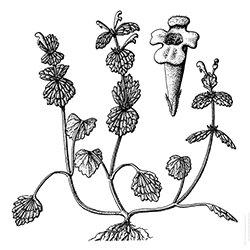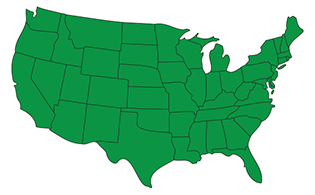

Henbit
Lamium amplexicaule
Henbit is a winter annual broadleaf weed that is also known as Dead Nettle, Henbit Deadnettle, Blind Nettle and Bee Nettle. Its scientific name is Lamium amplexicaule.
Identify

Opposite

Lobed

Reniform
Henbit can be identified by its mature stems, which are square, green to purple in color, nearly hairless and ascending at the tip. Its leaves are palmately veined, and the upper leaves encircle the stem at the base. In the flowering portions, stem internodes are shorter and the leaves can look whorled. Henbit has a fibrous root system and branches at the base. Blooming from February through November, this broadleaf weed produces whorls of six to 12 tube-shaped flowers. Purple to pink in color, the upper lip of each flower is shaped like a hood while the lower lip hangs downward.
Life Cycle
This broadleaf weed prefers cool, moist areas and commonly grows in fields, pastures, gardens, nursery plots, lawns, waste areas and along the edges of yards and buildings. Although Henbit prefers cooler areas, it is more common in warm-season grass than cool-season grass. It can be found throughout most of North America.

Control
Lamium amplexicaule is highly competitive in lawns with thin grass—especially in shady areas. Cultural weed control practices, such as proper mowing and watering routines, are not enough to remove this invader once it is established in a lawn or landscaping area. Professionally selected and applied broadleaf weed killers—based on your specific climate and geography—are the most effective method for control.




Facebook
X
Youtube
Copy Link
Email